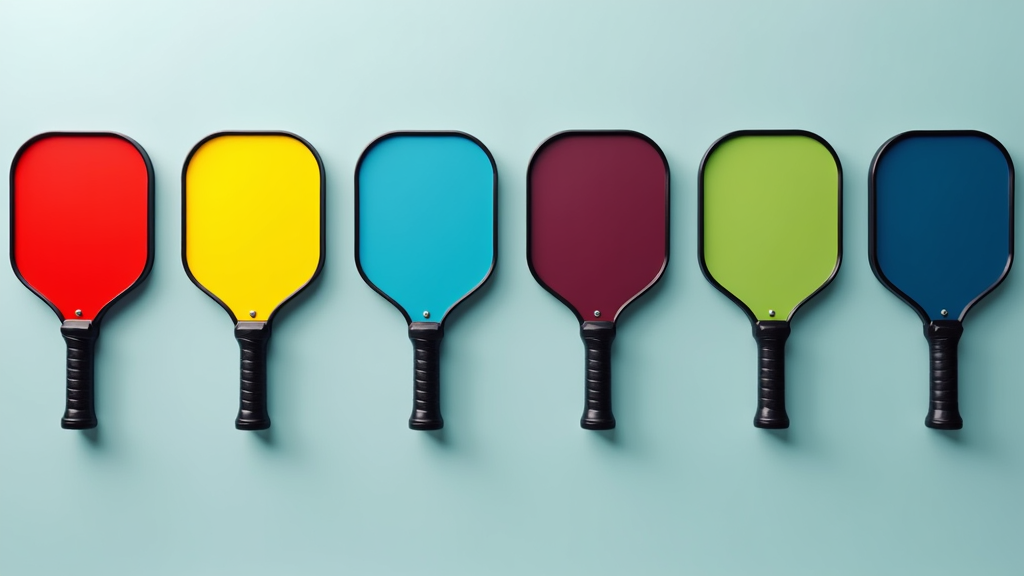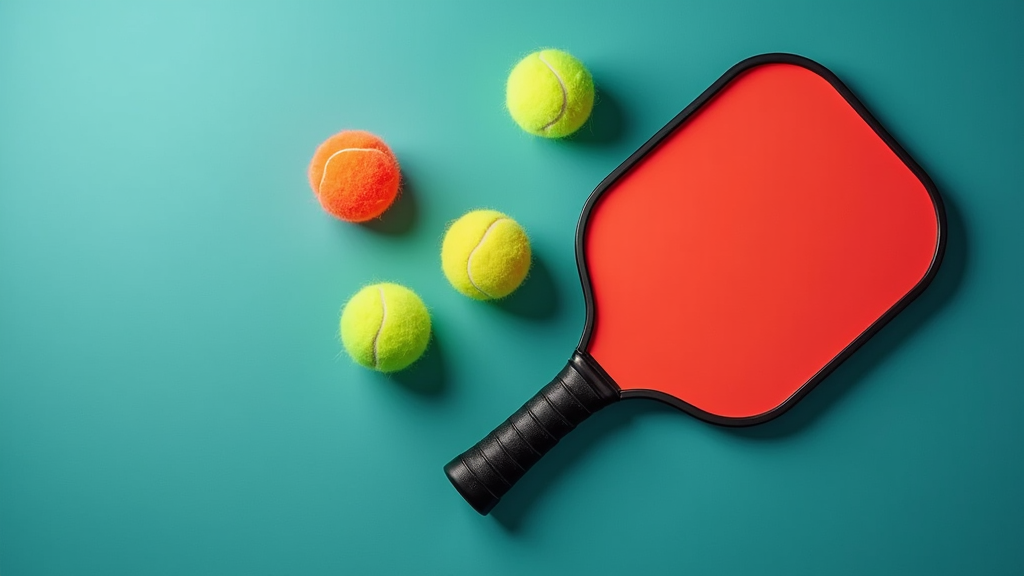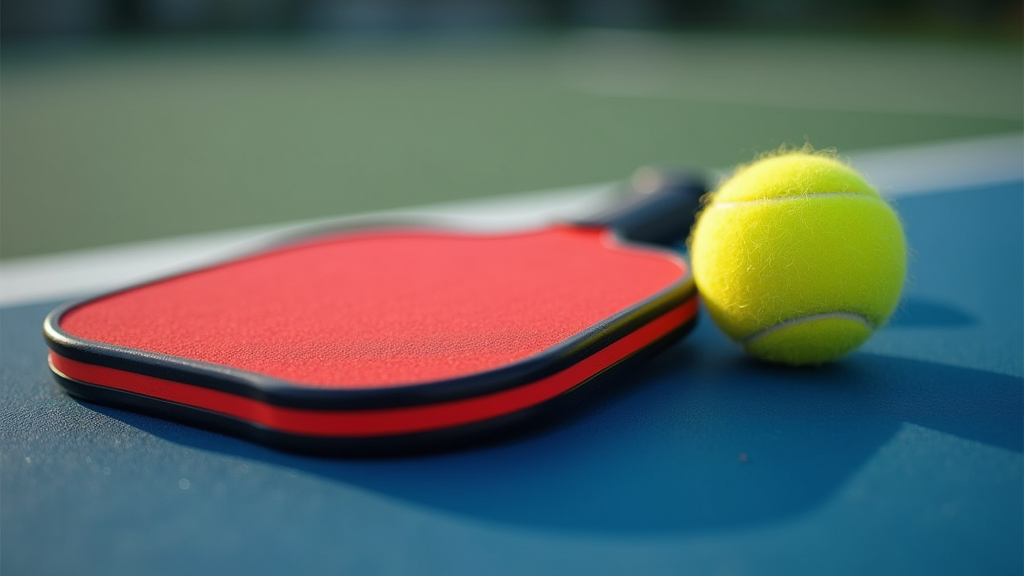Table of Contents
- Understanding Pickleball Paddle Handle Shapes Outline
- Understanding Pickleball Paddle Handle Shapes Outline
- Understanding Different Pickleball Paddle Handle Shapes Outline
- Pickleball Paddle Handle Shapes Outline: Selecting Handle Length
- Pickleball Paddle Handle Shapes Outline: Sweet Spot Impact
- Matching Paddle Shape to Your Pickleball Playing Style
- Pickleball Paddle Handle Shapes Outline: Adapting from Other Sports
- Pickleball Paddle Handle Shapes Outline: Choosing the Right Fit
Understanding Pickleball Paddle Handle Shapes Outline
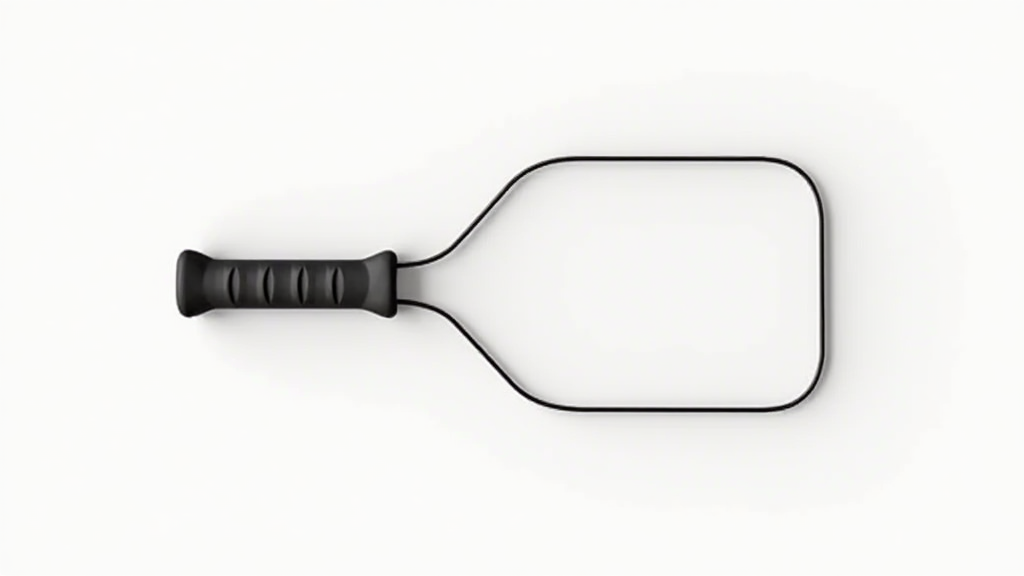
Importance of Pickleball Paddle Handle Dimensions
The shape of a pickleball paddle significantly impacts your performance on the court. The handle dimensions, in particular, play a crucial role in grip comfort, control, and maneuverability. According to USAPA regulations, handle length typically ranges from 4.375 to 5.75 inches, and the combined paddle length and width cannot exceed 24 inches. Selecting the right handle shape and size is essential for enhancing your game and complementing your individual play style.
Evolution of Pickleball Paddle Handle Designs
Pickleball paddle shapes have evolved considerably over time, with manufacturers continually innovating to cater to diverse playing styles and skill levels. Early paddles featured simpler designs, but recent developments have introduced hybrid shapes and specialized designs like bladed and teardrop paddles. These advancements aim to optimize performance by offering players enhanced control, power, and responsiveness.
Key Takeaways: Choosing the Right Paddle Handle
In this guide, you’ll learn about the core concepts related to different pickleball paddle handle shapes, including elongated, hybrid, standard, and widebody designs. You’ll also gain practical insights into how to select the ideal paddle shape based on your playing style, skill level, and personal preferences, ensuring you make an informed decision that elevates your game.
Understanding Pickleball Paddle Handle Shapes Outline
Fundamental Pickleball Paddle Shapes and Definitions
Understanding the different pickleball paddle shapes is crucial for selecting the right equipment. Each shape offers unique advantages that cater to various playing styles. Here are some key definitions:
- Elongated Shape:A longer paddle design that prioritizes reach and power, ideal for players with an aggressive baseline game.
- Hybrid Shape:A balanced design that combines the reach of an elongated paddle with a generous sweet spot, suitable for all-court players.
- Standard Shape:A versatile paddle with a larger sweet spot, offering a good balance of control and power for a wide range of playing styles.
- Widebody Shape:A shorter, wider paddle designed for enhanced control and maneuverability, perfect for players who excel at the net.
The core principle is to match the paddle shape to your playing style. An aggressive player might prefer an elongated paddle, while a control-focused player might opt for a widebody shape. All-court players often find hybrid or standard shapes to be the best fit.
Essential Pickleball Paddle Components and Shapes
A pickleball paddle consists of several essential components: the paddle face, the handle, and the edge guard. Understanding these components and their features is key to choosing the right paddle.
- Primary Aspects:
- Secondary Aspects:
- Important Variations:
- Shape:The shape of the paddle significantly impacts its performance. Common shapes include Elongated, Hybrid, Standard, Widebody, Blade, Teardrop, Diamond, Square, and Oversize.
- Sweet Spot Size:Widebody paddles generally have a larger sweet spot, making them more forgiving on off-center hits. Elongated paddles tend to have a smaller sweet spot, requiring more precision.
- Handle Length:Shorter handles offer quicker maneuverability, while longer handles provide more leverage and reach.
- Weight:The weight of the paddle affects both maneuverability and power. Lighter paddles are easier to swing, while heavier paddles can generate more power.
- Material:The material used in the paddle’s construction impacts its feel and performance. Common materials include graphite, fiberglass, and composite blends.
- Grip Size:Choosing the correct grip size is crucial for comfort and control. A grip that is too small or too large can lead to discomfort and decreased performance.
- Paddle Dimensions:Variations in length, width, and thickness can affect the paddle’s overall feel and performance.
- Edge Guard Type:The edge guard protects the paddle’s edges from damage and can also affect its weight and balance.
- Core Material:The core material, such as polymer, Nomex, or aluminum, influences the paddle’s power, control, and feel.
Understanding Different Pickleball Paddle Handle Shapes Outline
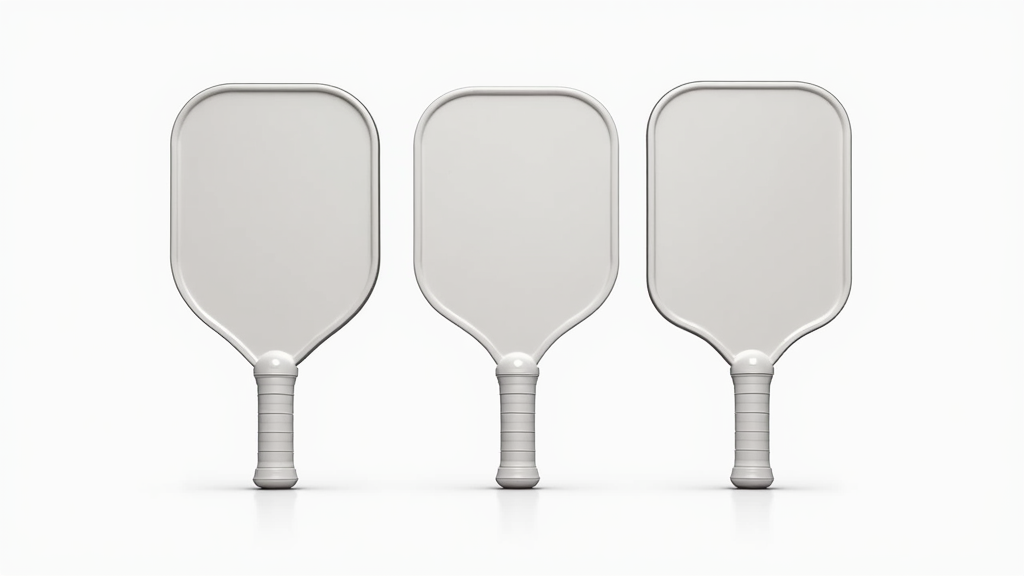
**Key Takeaway:** Choosing the right pickleball paddle shape significantly impacts your game. Elongated paddles favor power and reach, standard shapes offer control and forgiveness, while hybrid and widebody options provide balanced performance and larger sweet spots, respectively, so select a paddle that aligns with your playing style and skill level.
Elongated Pickleball Paddle Shapes: Reach and Power
Elongated paddles typically measure between 16.25 to 16.75 inches in length and 7.25 to 7.75 inches in width. A key characteristic is a smaller sweet spot from side to side, which can make off-center hits less forgiving. The weight distribution tends to be more head-heavy, contributing to increased plow-through on your shots.
These paddles are best suited for aggressive players who prioritize reach and power. Advanced players often choose elongated shapes for their enhanced court coverage and ability to generate powerful shots. Examples include the JOOLA Perseus and Engage MX.
Hybrid Pickleball Paddle Shapes: Balanced Performance
Hybrid paddles strike a middle ground between elongated and standard shapes, offering a balance of reach, maneuverability, and forgiveness. They combine aspects of both shapes, making them versatile for various play styles.
Intermediate players who want a blend of reach and a reasonable sweet spot size often prefer hybrid paddles. They are also a good choice for all-court players who need adaptability. Popular examples include the 6.0 Double Black Diamond and Vatic Pro Prism Flash.
Standard Pickleball Paddle Shapes: Control and Forgiveness
Standard-shaped paddles generally offer less reach and power compared to elongated options. However, they compensate with a larger sweet spot, particularly from side to side. They are typically more head-light, making them easier to maneuver.
These paddles are ideal for players who value control and forgiveness above all else. Beginners and recreational players often find standard shapes more comfortable and user-friendly. Examples include the JOOLA Scorpeus 3S and Selkirk Vanguard Control Epic.
Widebody Pickleball Paddle Shapes: Enhanced Sweet Spot
Widebody paddles feature shorter lengths, usually around 15.5 to 16 inches, and wider faces, approximately 8 to 8.5 inches. This design results in a larger sweet spot, enhancing forgiveness and stability on each hit.
Beginners and players who prioritize control over power often gravitate towards widebody paddles. They are particularly well-suited for players who focus on placement and accuracy. A classic example is the Onix Z5.
Exploring Other Unique Pickleball Paddle Shapes
Beyond the common shapes, several other unique designs cater to specific player preferences and needs:
- Blade Shape:With a maximum width of 7 inches to meet USAPA standards, blade-shaped paddles offer exceptional precision and control. However, they can be more challenging for beginners due to their smaller sweet spot.
- Teardrop Shape:These paddles feature a wider surface area at the top that tapers down towards the handle, providing a larger sweet spot and balanced control.
- Diamond Shape:Wider at the top and narrower at the base, diamond-shaped paddles generate powerful shots with increased control.
- Square Shape:Square paddles offer a broad, flat surface area with a larger hitting zone, providing excellent stability and control.
- Oversize Shape:With an extra-large surface area, oversize paddles offer maximum forgiveness, enhanced power, and improved stability.
Pickleball Paddle Handle Shapes Outline: Selecting Handle Length
Pickleball Paddle Handle Shapes: Benefits of Short Handles
Short pickleball paddle handles are reminiscent of those found on table tennis paddles. This design emphasizes precision and allows for quicker hand movements, making it easier to react swiftly at the net.
Players who excel with fast reactions, dinking, and finesse shots often find that a shorter handle complements their playing style, giving them enhanced control over the paddle face.
Pickleball Paddle Handle Shapes: Advantages of Long Handles
Longer pickleball paddle handles offer increased leverage, which translates to more power behind your shots. They also provide sufficient space for players who prefer using two-handed backhands, allowing for a more natural and comfortable grip.
These handles are particularly well-suited for players who utilize their full kinetic chain to generate power, enabling them to hit deeper shots with greater force and consistency.
Pickleball Paddle Handle Shapes: Finding Your Ideal Length
Ultimately, the best pickleball paddle handle length comes down to personal preference and what feels most comfortable in your hand. There is no one-size-fits-all solution, as individual playing styles and hand sizes vary considerably.
The best way to determine the right handle length for you is through experimentation. Try out different paddles with varying handle lengths to see which one feels the most natural and allows you to perform your best on the court. Don’t be afraid to switch it up until you find the perfect fit!
Pickleball Paddle Handle Shapes Outline: Sweet Spot Impact
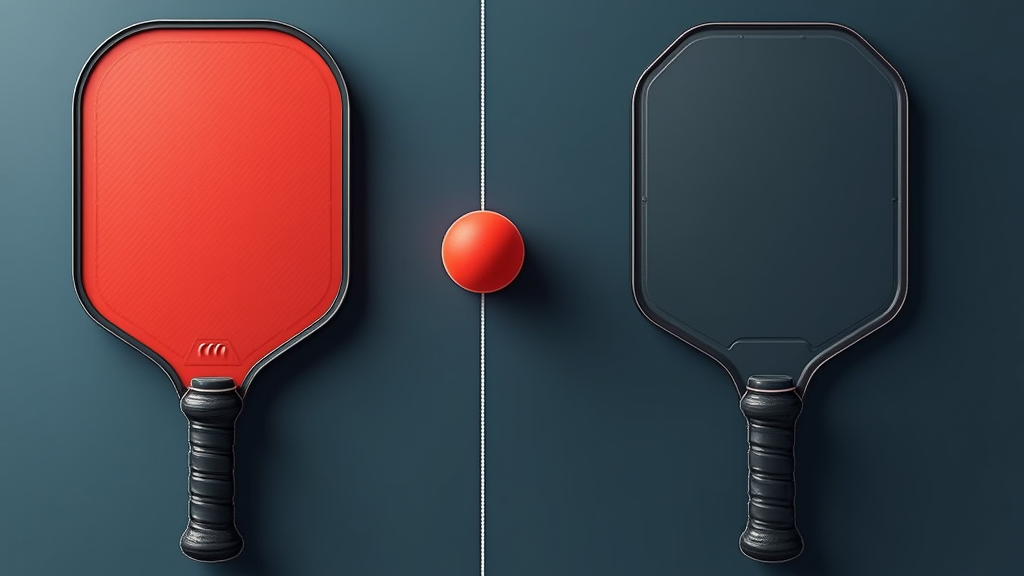
Sweet Spot Placement Relative to Handle Shape
The placement of the sweet spot on a pickleball paddle is significantly influenced by the paddle’s overall shape, which in turn, is related to the handle design. Elongated paddles, known for their extended reach, often have a smaller, more concentrated sweet spot. Conversely, widebody paddles, designed for increased surface area, typically feature a larger, more forgiving sweet spot.
The Importance of Finding the Paddle’s Sweet Spot
Achieving optimal contact between the paddle and the ball is crucial for consistent performance and power. The sweet spot is the area on the paddle face that provides the most efficient energy transfer, resulting in better control, increased power, and reduced vibration. Understanding where the sweet spot lies on your paddle, based on its shape and handle design, is essential for maximizing your game.
Drills to Improve Sweet Spot Contact
Enhancing your ability to consistently strike the ball within the sweet spot requires focused practice. Incorporating drills that emphasize controlled contact and targeted ball placement can significantly improve your accuracy. “Honey coverage” drills, where you aim to brush the ball with a specific area of the paddle face, are particularly effective for developing a feel for the sweet spot and improving overall paddle control.
Matching Paddle Shape to Your Pickleball Playing Style
Elongated Pickleball Paddles Outline for Aggressive Play
Aggressive pickleball players who prioritize reach and power often find elongated paddles to be the ideal choice. The extended length allows for greater court coverage and more forceful drives, enabling them to dominate the game with powerful shots and aggressive net play. This pickleball paddle handle shapes outline is optimal for players looking to maximize their offensive capabilities.
Widebody Pickleball Paddles Outline for Control Players
Players who prioritize control and precision in their pickleball game typically benefit from using widebody paddles. These paddles offer a larger sweet spot, providing enhanced accuracy and consistency on shots. The wider hitting surface allows for better ball placement and control, making them perfect for players who rely on finesse and strategic play. This pickleball paddle handle shapes outline is beneficial for players who value accuracy over raw power.
Hybrid Pickleball Paddles Outline for All-Court Versatility
For pickleball players who prefer an all-around game and excel in various aspects of play, hybrid paddles are an excellent choice. These paddles combine elements of both elongated and widebody designs, offering a balance of power, control, and maneuverability. Hybrid paddles allow players to adapt to different situations on the court and excel in both offensive and defensive strategies. This pickleball paddle handle shapes outline suits players who want a versatile and adaptable paddle for all playing styles.
Pickleball Paddle Handle Shapes Outline: Adapting from Other Sports
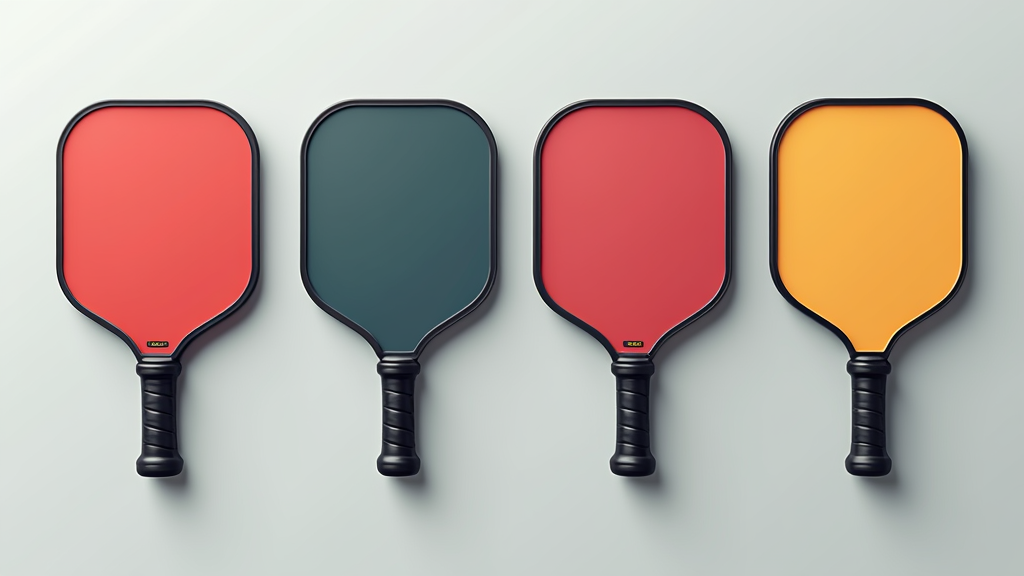
Tennis Players and Pickleball Paddle Handle Preferences
Tennis players transitioning to pickleball often gravitate towards elongated paddles. The longer handle allows for a similar feel to a tennis racquet, enabling them to maintain a familiar grip and swing style. This can be particularly advantageous for players who prefer an aggressive game with powerful serves and overheads. The extended reach also translates well for players accustomed to covering a larger court area.
Table Tennis Players and Pickleball Paddle Handle Choices
Table tennis players often find widebody paddles appealing when switching to pickleball. This is because widebody paddles emphasize quick reflexes, precise ball placement, and control, mirroring the core skills honed in table tennis. The shorter handle and larger paddle face provide excellent maneuverability and allow for rapid adjustments, essential for the fast-paced nature of pickleball.
Pickleball Paddle Handle Shapes Outline: Choosing the Right Fit
Recap of Key Pickleball Paddle Shape Considerations
Paddle shape is a crucial factor influencing your pickleball performance. It directly affects your reach, power generation, control, and overall maneuverability on the court.
Elongated paddle shapes are generally preferred by aggressive players seeking more reach and power, while widebody shapes are often favored by control-oriented players who prioritize ball placement and accuracy. Hybrid shapes offer a compromise, aiming to provide a balanced blend of power and control.
Final Thoughts on Selecting Pickleball Paddle Shapes
The best way to determine the ideal paddle shape for you is to experiment with different options and find what feels most comfortable and natural in your hand.
Remember to consider factors beyond just shape, such as paddle weight, handle size, and the materials used in construction. These elements, combined with the shape, will collectively contribute to your overall playing experience.
Also, consider your own physical attributes, such as your reach and hand size, when selecting a paddle shape. Players with shorter reach might benefit more from an elongated paddle, while those with larger hands may prefer a thicker handle.
If you’re new to pickleball, starting with a wider paddle shape can be a good approach, as it generally provides more forgiveness and a larger sweet spot. As your skills and playing style evolve, you can then progress to more specialized paddle shapes that better suit your specific needs and preferences.

